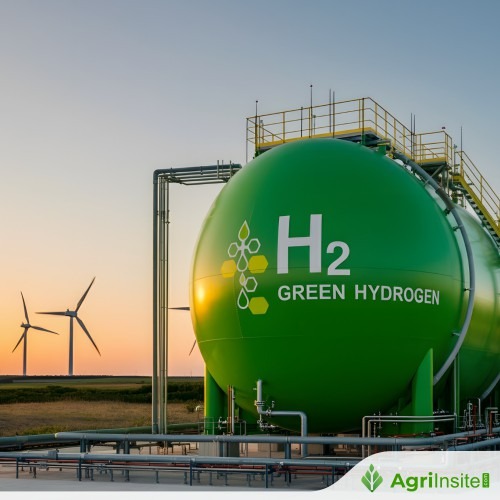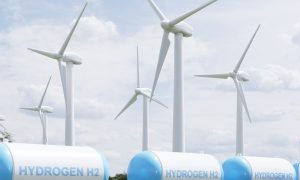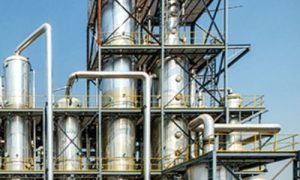Rs 5,025 Crore Order Book: Solar EPC Company Secures Project to Develop India’s First Green Hydrogen-Powered Steel Facility

Gensol Engineering Ltd, in partnership with Matrix Gas & Renewables, has secured a Rs 5,025 crore project to develop India’s first green hydrogen-powered steel facility. Utilizing 100% green hydrogen, the facility will drastically reduce carbon emissions, aligning with India’s carbon-neutral goals. Supported by government incentives, it represents a major shift toward sustainable steel production.
In a major leap toward a sustainable future, Gensol Engineering Ltd has secured a monumental project in collaboration with Matrix Gas & Renewables to develop India’s first Green Hydrogen-powered steel facility. This ambitious project, valued at Rs 5,025 crore, aims to revolutionize steel production by using 100% green hydrogen, significantly reducing carbon emissions and positioning India as a leader in sustainable industrial practices. But what makes this project a game-changer in the steel industry? Let’s dive into the details.
What is the Green Hydrogen Steel Project?
The awarded project is part of a national initiative under the National Green Hydrogen Mission, sanctioned by MECON and supported by the Ministry of Steel (MoS) and the Ministry of New and Renewable Energy (MNRE). This project marks a major milestone in the steel industry as it will be the first in India to produce steel using green hydrogen, thus eliminating the need for traditional fossil fuels like coal and natural gas, which are notorious for high CO2 emissions.
The facility will employ Direct Reduced Iron (DRI) vertical shaft technology to transform iron ore into sponge iron—a key step in producing steel. Unlike conventional methods, which heavily depend on fossil fuels, this process will exclusively use green hydrogen derived from renewable sources, making it an environmentally friendly alternative.
Why is This Project Important for India’s Sustainable Goals?
The Rs 5,025 crore order book underscores India’s commitment to green energy solutions and sustainable industrial development. India, being one of the largest steel producers in the world, faces immense pressure to reduce its carbon footprint. This project is a bold step towards fulfilling India’s carbon-neutral vision by 2070, aligning with global sustainability goals.
By focusing on green hydrogen, the steel industry can drastically reduce its carbon emissions. Traditional steel production methods account for approximately 8% of global CO2 emissions. With the new facility in place, these emissions can be curbed, making this project a significant contributor to cleaner industrial operations in India.
Key Players Involved: Gensol Engineering and Matrix Gas & Renewables
Both Gensol Engineering Ltd and Matrix Gas & Renewables play crucial roles in this green steel venture. Gensol Engineering, a key player in the solar EPC sector, is known for its expertise in renewable energy projects, having installed over 770 MW of solar capacity globally. Their contribution to India’s green energy movement has been significant, and this project will further solidify their position as a leader in the industry.
On the other hand, Matrix Gas & Renewables specializes in natural gas aggregation and green hydrogen, making them the perfect partner for this project. Their collaboration with IIT Bhubaneswar and Metsol AB (Sweden) ensures that this venture will leverage cutting-edge technology and international expertise in green hydrogen and steel production.
What Does the Future Hold for Green Steel in India?
The green hydrogen-powered steel facility is just the beginning. The pilot plant, with a capacity of 50 tons per day (TPD), is set to pave the way for additional facilities across India, particularly in steel-rich states like Chhattisgarh and Odisha. These regions, known for their steel production, could witness the establishment of several medium- and small-scale green steel plants, further contributing to India’s sustainable industrialization goals.
With the Indian government providing 50% capex incentives, this project is not just about technological advancement but also about promoting economic sustainability. The total capital expenditure for this pilot plant is estimated at Rs 321 crore, and with government support, it sets a precedent for future investments in the green hydrogen sector.
How Will Green Hydrogen Revolutionize Steel Production?
The traditional steel-making process emits large amounts of CO2, as it relies on coal or natural gas. With green hydrogen, the carbon emissions are eliminated, as hydrogen, when used as a reducing agent, results in the emission of only water vapor.
Green hydrogen is produced using renewable energy, such as solar or wind power, making it the ideal replacement for fossil fuels in industrial processes. This project, spearheaded by Matrix Gas & Renewables and Gensol Engineering, aims to showcase how clean hydrogen can be a viable alternative for large-scale steel production.
The Financial and Market Impact: A Boon for Investors
From a financial perspective, Gensol Engineering Ltd. has been performing impressively. The company holds an order book worth Rs 5,025 crore and continues to attract investor attention. The firm’s stock has seen multibagger returns of 2,400% in just three years, boasting a profit growth of 52.1% CAGR over the last five years.
The steel facility project, supported by strong government incentives and public-private partnerships, presents a massive growth opportunity not only for Gensol Engineering but also for India’s green energy and industrial sectors. Investors looking for long-term growth in sustainable projects should keep a close eye on these developments.
FAQs
Q1: What is the Rs 5,025 Crore Order for the Green Hydrogen-Powered Steel Facility?
A: This project is India’s first-ever steel facility to be powered by green hydrogen. It is valued at Rs 5,025 crore and is a collaboration between Gensol Engineering Ltd and Matrix Gas & Renewables. The facility will use 100% green hydrogen, replacing fossil fuels, and reducing carbon emissions in steel production.
Q2: Who are the key players involved in this project?
A: The key players are Gensol Engineering Ltd, a leader in solar engineering, and Matrix Gas & Renewables, a specialist in natural gas aggregation and green hydrogen. IIT Bhubaneswar and Metsol AB (Sweden) are also collaborating on the project.
Q3: What is the significance of using Green Hydrogen in steel production?
A: Green hydrogen is produced using renewable energy and emits no carbon during the process, unlike traditional methods that rely on coal or natural gas. Using green hydrogen will eliminate CO2 emissions from the steel-making process, making it a sustainable alternative.
Q4: Where will the Green Hydrogen-Powered Steel Facility be located?
A: The pilot plant for this project will be located in India. There are also plans to expand similar facilities to regions like Chhattisgarh and Odisha, where steel production is a major industry.
Q5: How does this project align with India’s sustainability goals?
A: This project is part of India’s National Green Hydrogen Mission, aligning with the country’s broader goal to achieve carbon neutrality by 2070. It also reflects the government’s commitment to green energy solutions and reducing carbon emissions in heavy industries.
Q6: What is Direct Reduced Iron (DRI) vertical shaft technology?
A: DRI vertical shaft technology is used to convert iron ore into sponge iron, a crucial component in steel production. The key advantage of this technology, in this project, is that it will use green hydrogen instead of fossil fuels, eliminating CO2 emissions.
Q7: What is the role of Gensol Engineering Ltd in this project?
A: Gensol Engineering Ltd is responsible for providing engineering, procurement, and construction (EPC) services for the project. The company has extensive experience in solar energy and renewable projects and will help implement green hydrogen technology in steel production.
Q8: How much of the capital expenditure is supported by the Government of India?
A: The Indian government will provide 50% capex incentives, underscoring its commitment to supporting green energy projects and reducing the environmental impact of industrial processes like steel production.
Q9: How does this project impact India’s steel industry?
A: This project represents a significant technological advancement in the steel industry by introducing a cleaner, greener method of steel production. It positions India as a leader in sustainable steel manufacturing, with the potential to influence global practices.
Q10: What is the estimated capacity of the pilot plant?
A: The pilot plant will have an initial production capacity of 50 tons per day (TPD), and the facility will set the foundation for future expansions across India.
Conclusion: A Giant Leap for Green Hydrogen and Sustainable Steel
This Rs 5,025 crore project represents a paradigm shift in India’s approach to industrialization, where sustainability is at the forefront. The development of India’s first green hydrogen-powered steel facility is a bold step toward achieving carbon neutrality, reducing reliance on fossil fuels, and promoting green energy solutions.

















